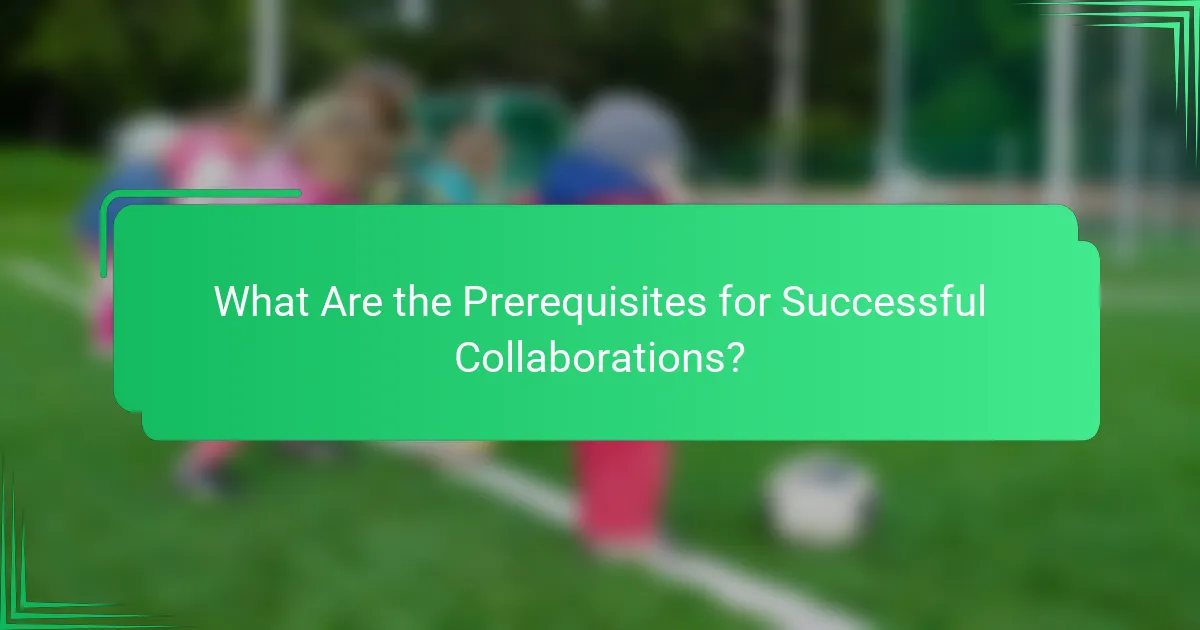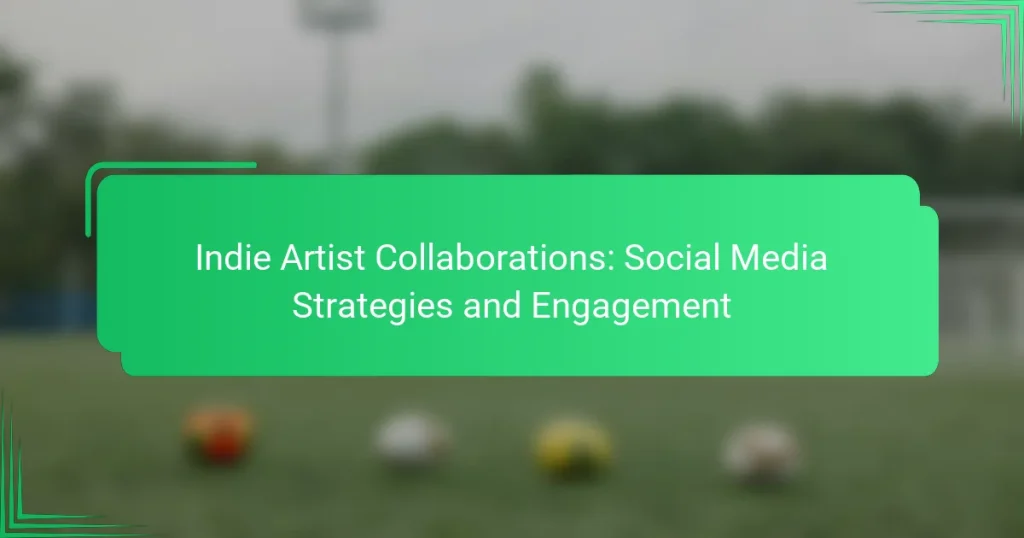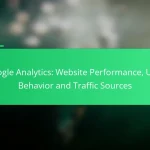Indie artists can harness the power of social media to cultivate collaborations and engage with their audience effectively. By showcasing their work and participating in interactive challenges, they can build a supportive community that enhances visibility and fosters meaningful relationships. Utilizing platforms like Instagram, SoundCloud, and Bandcamp allows artists to leverage unique features that promote music sharing and direct sales, making these tools essential for successful collaborations.

How Can Indie Artists Leverage Social Media for Collaborations?
Indie artists can effectively leverage social media to foster collaborations by engaging with their audience and connecting with other creators. Utilizing various platforms allows artists to showcase their work, participate in challenges, and build a supportive community.
Utilizing Instagram for Visual Storytelling
Instagram is ideal for indie artists to share visual content that tells their story. By posting behind-the-scenes photos, artwork, or snippets of their music, artists can create a narrative that resonates with followers. Utilizing features like Stories and Reels can enhance engagement and attract potential collaborators.
To maximize impact, artists should maintain a consistent aesthetic and use relevant hashtags to reach a wider audience. Engaging with comments and direct messages fosters a sense of community and encourages collaboration opportunities.
Engaging on TikTok with Creative Challenges
TikTok offers a dynamic platform for indie artists to engage with audiences through creative challenges. Artists can create or participate in trending challenges that showcase their music or artistic skills, making it easier to connect with other creators. This format encourages user-generated content, amplifying reach and visibility.
To effectively engage, artists should keep videos short and captivating, ideally under 30 seconds, and use popular sounds or hashtags to increase discoverability. Collaborating with other TikTok users can lead to viral moments and new fan bases.
Building Community on Facebook Groups
Facebook Groups provide a space for indie artists to build a supportive community around shared interests. By joining or creating groups focused on music collaboration, artists can network with like-minded individuals and share resources. This environment fosters collaboration opportunities and feedback on projects.
Artists should actively participate by sharing their work, offering constructive feedback, and initiating discussions. Regular engagement helps establish credibility and encourages others to reach out for potential collaborations.
Networking on Twitter through Hashtags
Twitter is a powerful tool for indie artists to network through the use of hashtags. By participating in conversations around trending topics or using specific hashtags related to music collaboration, artists can connect with industry professionals and fellow musicians. This can lead to valuable partnerships and exposure.
Artists should tweet regularly, share updates about their work, and engage with others’ content. Utilizing hashtags like #IndieMusic or #Collab can help increase visibility and attract potential collaborators. It’s important to balance promotional content with genuine interactions to build meaningful relationships.

What Are Effective Engagement Strategies for Indie Artists?
Effective engagement strategies for indie artists include interactive methods that foster community and connection with fans. By utilizing platforms like social media, artists can enhance their visibility and create meaningful relationships with their audience.
Hosting Live Q&A Sessions
Live Q&A sessions allow indie artists to interact directly with their fans, answering questions and sharing insights in real-time. These sessions can be hosted on platforms like Instagram Live or Facebook Live, providing an informal setting for engagement.
To maximize participation, promote the session in advance and encourage fans to submit questions beforehand. Consider scheduling these sessions at convenient times for your audience, such as evenings or weekends.
Creating Collaborative Playlists on Spotify
Collaborative playlists on Spotify enable indie artists to engage with fans by inviting them to contribute their favorite tracks. This not only fosters a sense of community but also helps artists discover new music that resonates with their audience.
To create a successful collaborative playlist, choose a theme that reflects your music style or current projects. Share the playlist link on social media and encourage fans to add their selections, creating a dynamic and evolving collection of songs.
Running Contests and Giveaways
Contests and giveaways are effective ways to boost engagement and attract new followers. Indie artists can offer merchandise, concert tickets, or exclusive content as prizes, motivating fans to participate and share the event.
When planning a contest, clearly outline the rules and entry methods, such as following your social media accounts, tagging friends, or sharing a post. Keep the contest duration reasonable, typically one to two weeks, to maintain excitement and momentum.

Which Platforms Are Best for Indie Artist Collaborations?
Indie artists can maximize their collaboration efforts by leveraging platforms that cater specifically to their strengths. Instagram, SoundCloud, and Bandcamp each offer unique features that enhance visibility, music sharing, and direct sales, making them essential tools for collaboration.
Instagram for Visual Content
Instagram is ideal for indie artists looking to showcase their visual content and connect with fans. The platform’s emphasis on images and short videos allows artists to share behind-the-scenes looks, album art, and promotional materials effectively.
To engage followers, artists should post regularly and utilize stories, reels, and IGTV for longer content. Collaborating with other artists through joint posts or takeovers can also expand reach and introduce each artist to new audiences.
SoundCloud for Music Sharing
SoundCloud serves as a powerful platform for indie artists to share their music and collaborate with others in the industry. It allows users to upload tracks and receive feedback from listeners, making it a great space for discovering new sounds and styles.
Artists can create collaborative playlists or remix each other’s tracks, fostering a sense of community. Additionally, utilizing SoundCloud’s promotional tools can help increase visibility and attract new listeners, essential for growing an indie career.
Bandcamp for Direct Sales
Bandcamp is a valuable platform for indie artists focused on direct sales of their music and merchandise. It allows artists to set their own prices and offer fans the option to pay more if they wish, which can lead to higher revenue compared to traditional streaming services.
Artists should consider offering exclusive content, such as limited edition vinyl or special bundles, to incentivize purchases. Engaging with fans through Bandcamp’s messaging feature can also strengthen relationships and encourage repeat sales.

How to Measure the Success of Social Media Collaborations?
Measuring the success of social media collaborations involves analyzing various metrics that reflect engagement, follower growth, and content reach. These indicators provide insights into how well the collaboration resonates with audiences and its overall impact on brand visibility.
Tracking Engagement Metrics
Engagement metrics are crucial for understanding how audiences interact with collaborative content. Key metrics include likes, shares, comments, and saves. A high engagement rate, typically above 1-3% for posts, indicates that the content is resonating with viewers.
To effectively track these metrics, use social media analytics tools like Facebook Insights or Instagram Analytics. Regularly reviewing engagement data helps identify which types of content perform best, allowing for adjustments in future collaborations.
Analyzing Follower Growth
Follower growth is a direct indicator of a collaboration’s success in expanding reach. Monitor the number of new followers gained during and after the collaboration period. A growth rate of 5-10% is often considered healthy, depending on the platform and existing follower count.
Consider using a spreadsheet to track follower numbers before, during, and after the collaboration. This will help you visualize trends and assess the collaboration’s effectiveness in attracting new audiences.
Evaluating Content Reach
Content reach measures how many unique users have seen the collaborative posts. This metric is essential for understanding the potential audience size. Aim for a reach that exceeds your average post performance, ideally by 20-50% during collaborations.
Utilize tools like Google Analytics or platform-specific insights to assess reach. Comparing reach across different posts can help identify which collaborators or content types generate the most visibility, guiding future partnership decisions.

What Are the Prerequisites for Successful Collaborations?
Successful collaborations among indie artists hinge on effective communication and clearly defined objectives. Establishing these foundational elements ensures that all parties are aligned and can work together efficiently.
Establishing Clear Communication Channels
Clear communication is vital for any collaboration, allowing artists to share ideas, feedback, and updates. Utilize platforms like Slack, Discord, or even dedicated WhatsApp groups to facilitate real-time discussions.
Regular check-ins through video calls or messaging can prevent misunderstandings and keep everyone on the same page. Consider setting a schedule for these check-ins to maintain momentum throughout the collaboration.
Defining Collaboration Goals
Setting specific goals is crucial for guiding the collaboration process. Determine what each artist hopes to achieve, whether it’s creating a new song, increasing social media engagement, or reaching a broader audience.
Use the SMART criteria—Specific, Measurable, Achievable, Relevant, Time-bound—to outline these goals. For example, aim to release a joint single within three months or increase followers by a certain percentage within a defined timeframe.

How Can Indie Artists Use Influencer Marketing?
Indie artists can leverage influencer marketing to expand their reach and engage with new audiences. By collaborating with influencers, artists can promote their music and brand through authentic endorsements that resonate with followers.
Partnering with Micro-Influencers
Micro-influencers, typically defined as individuals with 1,000 to 100,000 followers, can be particularly effective for indie artists. These influencers often have a highly engaged audience, which allows for more personal connections and trust compared to larger influencers.
When partnering with micro-influencers, consider their niche and audience demographics to ensure alignment with your music style and target listeners. A well-chosen micro-influencer can create content that showcases your music authentically, whether through reviews, live performances, or social media posts.
To maximize the impact of these partnerships, provide clear guidelines on how you want your music to be presented. Avoid overly scripted content; instead, encourage influencers to express their genuine thoughts. This authenticity can lead to higher engagement rates and a stronger connection with potential fans.


